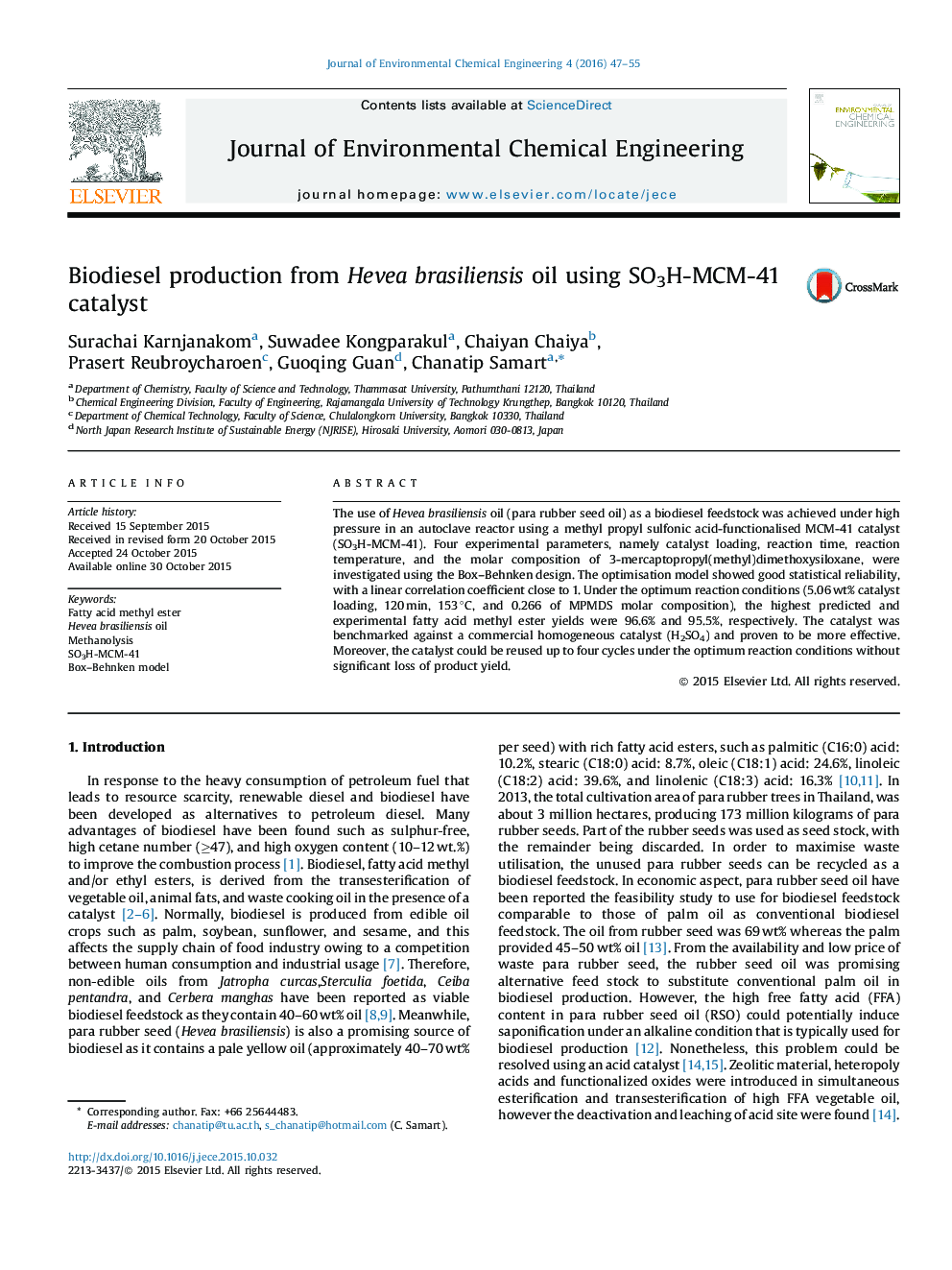| کد مقاله | کد نشریه | سال انتشار | مقاله انگلیسی | نسخه تمام متن |
|---|---|---|---|---|
| 221858 | 464267 | 2016 | 9 صفحه PDF | دانلود رایگان |
• Hevea brasiliensis oil or para rubber seed oil was achieved as an alternative raw material for biodiesel production.
• The methyl propyl sulfonic acid-functionalised MCM-41 catalyst was benchmarked against a commercial homogeneous catalyst (H2SO4) and proven to be more effective.
• The catalyst life time could be prolonged up to four cycles without reduction of FAME yield.
The use of Hevea brasiliensis oil (para rubber seed oil) as a biodiesel feedstock was achieved under high pressure in an autoclave reactor using a methyl propyl sulfonic acid-functionalised MCM-41 catalyst (SO3H-MCM-41). Four experimental parameters, namely catalyst loading, reaction time, reaction temperature, and the molar composition of 3-mercaptopropyl(methyl)dimethoxysiloxane, were investigated using the Box–Behnken design. The optimisation model showed good statistical reliability, with a linear correlation coefficient close to 1. Under the optimum reaction conditions (5.06 wt% catalyst loading, 120 min, 153 °C, and 0.266 of MPMDS molar composition), the highest predicted and experimental fatty acid methyl ester yields were 96.6% and 95.5%, respectively. The catalyst was benchmarked against a commercial homogeneous catalyst (H2SO4) and proven to be more effective. Moreover, the catalyst could be reused up to four cycles under the optimum reaction conditions without significant loss of product yield.
Figure optionsDownload as PowerPoint slide
Journal: Journal of Environmental Chemical Engineering - Volume 4, Issue 1, March 2016, Pages 47–55
